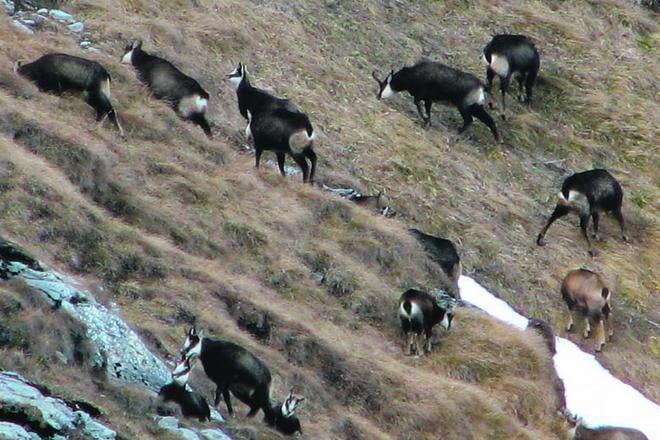THE CHAMOIS in the Tatras now number over 1,000; thus, it is clear that the population of the Tatra chamois (Rupicapra rupicapra tatrica; in Slovak – Kamzík vrchovský tatranský) continues to grow.
In 1999 only about 320 chamois, a goat-antelope species, lived in the Tatra mountains, and prior to winter 2005, their number did not exceed 500. According to this year’s autumn census, however, that number has since ballooned to 1,096, Lenka Burdová, of the State Forests of the Tatra National Park (TANAP), informed the TASR newswire. Out of that, 810 were living in the Slovak part of the mountain range and 286 on the Polish side. By the time of the census, 134 young chamois were found grazing in the Slovak Tatras and 43 in the Polish Tatras.
A notable feature of this year’s census was the existence of large herds: in the Hlinská valley more than 70 were counted in one herd, while most of the biggest herds were found in Belianske Tatry.
“The viability of the chamois population is evaluated by the size of individual herds, not just by the total number of the population,” TANAP zoologist Jozef Hybler told the SITA newswire. “In general, the bigger the herds, the more viable the whole population is. Seeing such a big herd is not a rarity, but it is not very common, either. That said, the existence of such a big herd is a good sign that this rare native sub-species typical of the Tatras is faring well these days,” he concluded.
During the census, researches found a dead chamois under the Volovec peak in the Western Tatras, which they believe slipped on a rock and fell from a great height. The chamois, a seven year old male, was brought to a TANAP station in Tatranská Lomnica, where the specimen will be used for further research.
Biologists have expressed excitement about the growing chamois population. Hybler ascribes this to several measures that have been put in place, like winter game feeding with rowan berries in times of need, and routine inspection of the observance of Visitors’ Discipline rules.
“We also managed to eliminate several negative factors, like visitors disturbing chamois in their habitats, poaching, and helicopter flights over these protected areas,” Hybler added.


 The Tatras' chamois population seems to be growing steadily. (source: SITA)
The Tatras' chamois population seems to be growing steadily. (source: SITA)